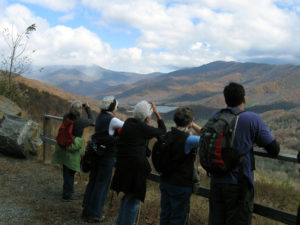 The Swannanoa Valley Museum & History Center will lead a hike overlooking the historic North Fork Valley on Saturday, October 8. This moderate, three-mile hike on Grove Stone and Sand Quarry roads will feature guest hike leader Jason Conner, one of the managers of the site who will lend his geological expertise.
The Swannanoa Valley Museum & History Center will lead a hike overlooking the historic North Fork Valley on Saturday, October 8. This moderate, three-mile hike on Grove Stone and Sand Quarry roads will feature guest hike leader Jason Conner, one of the managers of the site who will lend his geological expertise.
From a geologic perspective, Conner explained, “The Appalachian mountain chain is the oldest mountain chain in the world. At one time it was higher than the Himalayans, but erosion over time has rounded our mountains down. The material we mine is between 600-800 million years old.
“This is part of the Ashe metamorphic suite, which covers most of this valley and it’s pretty consistent around the whole area. You can even see it in the outcrops at the Craggy Gardens visitor center and all up the Blue Ridge Parkway.” Hike participants will learn more about the cultural and natural history on the Museum’s hike.
This hike is the seventh destination in the museum’s Valley History Explorer Series, North Fork. These excursions visit historic sites throughout the Swannanoa Valley. Participants can complete the entire series of seven hikes or sign up for a single hike.
Grove Stone and Sand Quarry was founded by Edwin Wiley “E.W.” Grove in the 1920s. Born in Tennessee in 1850, Grove began his career as a drug store clerk, purchased a drugstore at age 29, and soon established the Paris Medicine Company, where he developed “Grove’s Tasteless Chill Tonic” and other popular patent medicines. The self-made millionaire relocated to St. Louis in 1889, and suffering from a bronchial ailment, first visited Asheville in 1897, upon the recommendation of his physician.
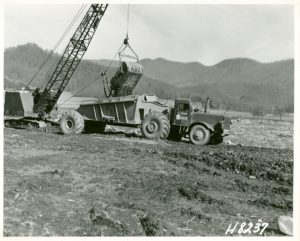 As Grove’s interests turned from pharmaceuticals to land development, he envisioned a residential suburb centered on a resort hotel nestled on the side of Sunset Mountain in Asheville. The Grove Park Inn opened in 1913, surrounded by elegant Arts and Crafts-style residential homes along Kimberly Avenue.
As Grove’s interests turned from pharmaceuticals to land development, he envisioned a residential suburb centered on a resort hotel nestled on the side of Sunset Mountain in Asheville. The Grove Park Inn opened in 1913, surrounded by elegant Arts and Crafts-style residential homes along Kimberly Avenue.
He established his rock quarry east of Asheville on Old Route 70 to gather, sort, wash, and load the stones onto rail cars for transport to the inn and his other building sites. The quarry, still in operation today, features winding roads that lead to sweeping vistas of the North Fork Valley and City of Asheville Watershed.
The quarry itself, though still named for Grove, has changed hands. Hike leader Conner said, “Grovestone, we believe, was started in 1923 by E.W. Grove to produce and supply material for his Grovemont community…. Then W.G. Northcott owned the property. He was the manager. Our company [Hedrick Industries] bought the property in the early ‘50’s, probably around 1954.
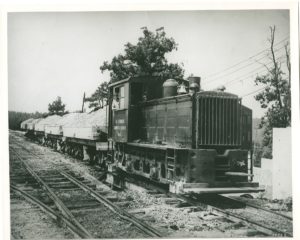 “We first mined the alluvial deposit of the Swannanoa River, which is the creek gravel and we made construction material for highways. Then about 1984 we depleted that deposit and moved up the mountain to mine the granite material, making it mainly for the Department of Transportation and for asphalt in the local area.
“We first mined the alluvial deposit of the Swannanoa River, which is the creek gravel and we made construction material for highways. Then about 1984 we depleted that deposit and moved up the mountain to mine the granite material, making it mainly for the Department of Transportation and for asphalt in the local area.
“At this facility we employ over 30 individuals and our asphalt plant employs another dozen. We also keep much of our land in forest. In the last few years we’ve had thousands of students come through to educate them on geology, wildlife habitat, plants, and streams.”
In 1924, just after opening the quarry, Grove acquired land, adjacent to the quarry, to found his model community, Grovemont-on-Swannanoa. As the advertisements boasted, Grovemont was “located just 12 miles from Asheville, in the center of much coveted surroundings of natural beauty.”
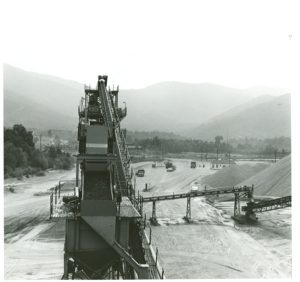 In this community, Grove sought to recreate on the banks of the Swannanoa River the English village his grandparents had lived in. Located on a broad plateau, set against a backdrop of mountains, the idyllic residential village was to include homes, shops, a post office, library, a hotel, a country club, two lakes, and town hall, all centered on a green, linked by a web of roads and sidewalks.
In this community, Grove sought to recreate on the banks of the Swannanoa River the English village his grandparents had lived in. Located on a broad plateau, set against a backdrop of mountains, the idyllic residential village was to include homes, shops, a post office, library, a hotel, a country club, two lakes, and town hall, all centered on a green, linked by a web of roads and sidewalks.
Grovemont was billed as America’s first planned community, where Grove extolled, “people of moderate means could secure large lots at reasonable prices.” Expansive residential lots, typically measuring 80 feet wide and 160 feet deep, offered ample space for lawns, gardens, and garages. With the exception of one residence, the English Tudor-style and Arts & Crafts-style homes were constructed from river rock and stucco, a distinguishing characteristic of all of Grove’s properties in the Asheville area. The exception is the residence of a Beacon executive, who insisted on covering his home in brick. Grove managed to construct 19 residences. Today, 15 homes still stand.
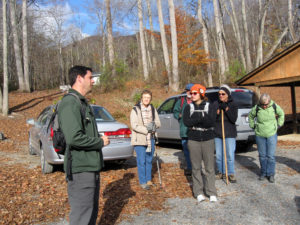 Grove also developed Lake Eden as “an amusement center for Asheville as well as Grovemont.” The property, which later became the site of Black Mountain College and now serves as Camp Rockmont, still features two distinctive river rock buildings, one which served as a dance and recreation hall. Grove passed away in 1927, before Grovemont’s completion.
Grove also developed Lake Eden as “an amusement center for Asheville as well as Grovemont.” The property, which later became the site of Black Mountain College and now serves as Camp Rockmont, still features two distinctive river rock buildings, one which served as a dance and recreation hall. Grove passed away in 1927, before Grovemont’s completion.
Hike participants will meet at the museum at 9:00 a.m.. Pre-registration is required. Sign up by calling 828-669-9566 or online at swannanoavalleymuseum.org.